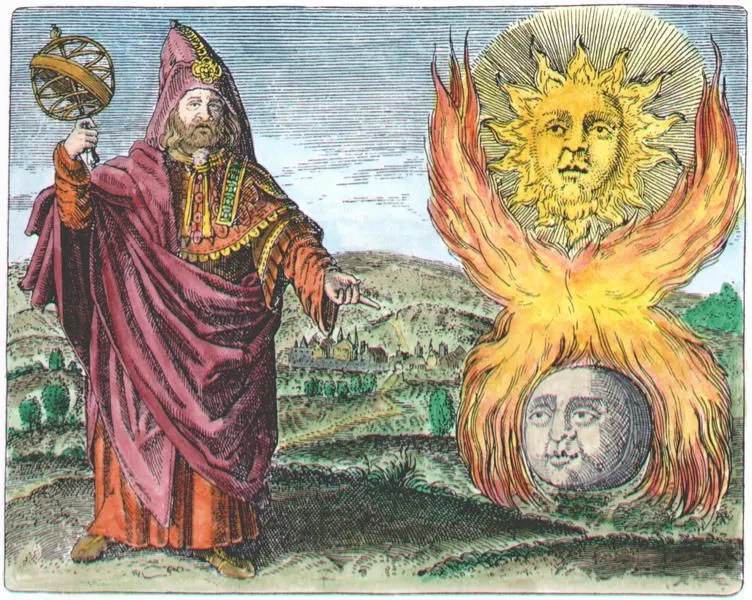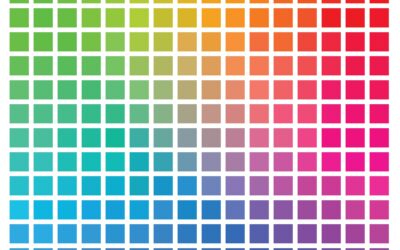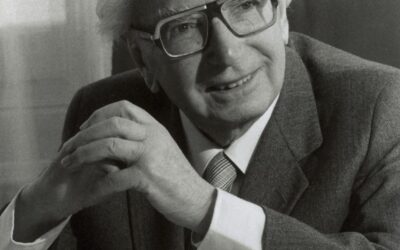
Who was Hermes Trismegistus
Hermes Trismegistus, a legendary figure in the Hermetic tradition, is credited with authoring a body of texts known as the Hermetica, which had a profound influence on Western esotericism, alchemy, and mystical thought. The Hermetic philosophy, with its emphasis on the unity of the cosmos, the correspondence between the macrocosm and the microcosm, and the path of spiritual transformation, shares significant parallels with the psychological theories of Carl Jung, particularly his concept of the individuation process. This blog post will explore the key elements of Hermetic philosophy and examine how they relate to Jungian psychology and the individuation process.
Main Ideas:
- Hermes Trismegistus is a legendary figure credited with authoring the Hermetica, which influenced Western esotericism and mystical thought.
- Hermetic philosophy emphasizes the unity of the cosmos and the correspondence between macrocosm and microcosm.
- The Hermetic maxim “As above, so below” suggests interconnectedness between the universe and the individual.
- Hermetic philosophy uses principles of correspondence and analogy to understand connections between different levels of reality.
- Carl Jung was influenced by Hermetic philosophy, particularly in his concepts of the collective unconscious and individuation process.
- The Hermetic path aims for gnosis, or direct experiential knowledge of the divine, through spiritual transformation.
- Hermetic philosophy views the cosmos as a unified whole with the divine immanent in all levels of existence.
- The human being is seen as a microcosm of the cosmos, composed of body, soul, and spirit.
- Alchemy in Hermetic thought is understood as a spiritual discipline for self-transformation.
- The Hermetic spiritual path involves self-knowledge, purification, and alignment with divine will.
- Hermetic philosophy conceives of the divine as both transcendent and immanent, referred to as “The All” or “The One.”
- The Hermetic tradition offers a framework for self-discovery and transformation relevant to modern spirituality and psychology.
- Hermetic thought emphasizes the divine nature of the self and the potential for spiritual awakening.
- The Hermetic path involves confronting one’s shadow aspects and integrating unconscious elements of the psyche.
- Hermetic philosophy provides a holistic worldview that can counterbalance materialistic tendencies in modern culture.
The Hermetic Vision of the Cosmos:
At the heart of Hermetic philosophy is a vision of the cosmos as a unified, interconnected whole, in which the divine is immanent and permeates all levels of existence. This holistic worldview is encapsulated in the famous Hermetic maxim, “As above, so below,” which suggests that the macrocosm (the universe) and the microcosm (the individual) are mirror images of each other, governed by the same principles and laws.
This understanding of the cosmos has important implications for how we perceive the nature of reality and the place of the human soul within it. It suggests that the individual is not separate from the larger universe but is intimately connected to it, and that the path to spiritual awakening involves aligning oneself with the divine principles that underlie all of creation.
 The Principles of Correspondence and Analogy:
The Principles of Correspondence and Analogy:
Hermetic philosophy is based on the principles of correspondence and analogy, which hold that there are hidden connections and similarities between seemingly disparate phenomena. These principles suggest that the various levels of reality – the physical, the psychological, and the spiritual – are interconnected and can be understood in terms of each other.
For example, Hermetic thinkers believed that the seven classical planets corresponded to specific metals, colors, and parts of the human body, and that these correspondences could be used for healing and spiritual transformation. Similarly, they saw the process of alchemical transmutation, in which base metals were transformed into gold, as a metaphor for the transformation of the human soul.
The Relevance of Hermetic Philosophy for Jungian Psychology:
Carl Jung, one of the founders of depth psychology, was deeply influenced by Hermetic philosophy and saw in it a powerful framework for understanding the human psyche. Jung’s concept of the collective unconscious, which he described as a universal layer of the psyche containing archetypal symbols and patterns, is strongly resonant with the Hermetic idea of a unified cosmos in which all things are interconnected.
Moreover, Jung’s understanding of the individuation process – the path of psychological and spiritual development that leads to the integration of the conscious and unconscious aspects of the psyche – bears a striking resemblance to the Hermetic path of spiritual transformation. Both involve a process of self-discovery, the confrontation of one’s shadow or darker aspects, and the ultimate realization of one’s divine nature.
Jung also drew heavily on Hermetic and alchemical symbolism in his psychological theories, seeing in them a rich language for describing the inner workings of the psyche. He believed that the symbols and images of alchemy, such as the philosopher’s stone, the hermaphrodite, and the ouroboros, represented universal psychological processes and could be used as tools for self-understanding and transformation.
The Hermetic Path of Spiritual Transformation:
The ultimate goal of Hermetic philosophy is the attainment of gnosis, or direct experiential knowledge of the divine. This is achieved through a process of spiritual transformation that involves the purification and awakening of the soul, the cultivation of virtue and wisdom, and the ultimate union with the divine.
Central to this process is the idea of the “inner alchemy,” in which the individual works to transmute the base elements of their psyche – such as ignorance, attachment, and egoism – into the gold of spiritual realization. This inner work is often described using alchemical symbolism, such as the dissolution of the ego (the “nigredo” or blackening), the purification of the soul (the “albedo” or whitening), and the final union with the divine (the “rubedo” or reddening).
The Hermetic path also emphasizes the importance of self-knowledge and the exploration of the inner world. The famous Hermetic inscription, “Know thyself,” suggests that the key to spiritual awakening lies within, and that the individual must undertake a journey of self-discovery in order to realize their true nature.
Implications for Psychotherapy and Spiritual Practice:
The Hermetic philosophy, with its emphasis on the unity of the cosmos, the correspondence between the inner and outer worlds, and the path of spiritual transformation, offers a rich framework for both psychotherapy and spiritual practice.
In the context of psychotherapy, the Hermetic perspective suggests that the individual’s psychological struggles and symptoms can be understood as part of a larger process of spiritual development. By working with Hermetic and alchemical symbolism, therapists can help clients to explore the deeper layers of their psyche and to find meaning and purpose in their experiences.
Moreover, the Hermetic emphasis on self-knowledge and inner exploration is strongly resonant with many contemporary approaches to psychotherapy, such as depth psychology, transpersonal psychology, and mindfulness-based therapies. These approaches recognize the importance of exploring the inner world and cultivating a relationship with one’s own psyche as a key part of the healing process.
In the context of spiritual practice, the Hermetic path offers a powerful framework for understanding the stages of spiritual development and the challenges and opportunities that arise along the way. The Hermetic emphasis on the integration of the inner and outer worlds, the transmutation of the self, and the ultimate union with the divine can provide guidance and inspiration for those seeking to deepen their spiritual understanding and experience.
The mystical philosophy of Hermes Trismegistus, as embodied in the Hermetic tradition, offers a rich and profound framework for understanding the nature of the cosmos, the human soul, and the path of spiritual transformation. Its emphasis on the unity of all things, the correspondence between the inner and outer worlds, and the importance of self-knowledge and inner alchemy resonates strongly with the psychological theories of Carl Jung and his concept of the individuation process.
By exploring the parallels between Hermetic philosophy and Jungian psychology, we can gain a deeper appreciation for the wisdom and insight of these ancient teachings and their relevance for contemporary spirituality and psychology. The Hermetic path offers a powerful framework for self-discovery, healing, and transformation, one that can guide us towards a more integrated and awakened way of being in the world.
As we continue to navigate the challenges and complexities of modern life, the timeless wisdom of Hermes Trismegistus and the Hermetic tradition can serve as a beacon of light, reminding us of our inherent connection to the divine and the transformative power of the inner journey. By embracing the principles of Hermetic philosophy and integrating them into our own lives and practices, we can deepen our understanding of ourselves and the world around us, and move closer to the realization of our highest potential.
“Birth is not the beginning of life – only of an individual awareness. Change into another state is not death – only the ending of this awareness.”
― Hermes Trismegistus, Corpus Hermeticum
The Hermetic Concept of the Divine:
At the core of Hermetic philosophy is a conception of the divine as the ultimate unity and source of all existence. This divine principle is often referred to as “The All” or “The One,” and is understood as being both transcendent and immanent – that is, it is both the source of the cosmos and pervades all levels of reality.
In Hermetic thought, the divine is not a remote or abstract entity, but is intimately connected to the world and to the human soul. The divine is seen as the very ground of being, the intelligence and energy that animates all things, and the ultimate goal of human spiritual striving.
This understanding of the divine has important implications for how we understand the nature of the self and the path of spiritual development. In Hermetic philosophy, the individual soul is seen as a microcosm of the divine, containing within itself the same principles and potentials that underlie the cosmos as a whole.
The path of spiritual development, then, is one of realizing and actualizing this divine potential within oneself. This involves a process of self-purification, self-knowledge, and self-transformation, in which the individual gradually aligns themselves with the divine will and awakens to their true nature.
The Hermetic Anthropology:
Closely related to the Hermetic concept of the divine is its understanding of the nature of the human being. In Hermetic philosophy, the human being is seen as a microcosm of the cosmos, containing within itself all the principles and forces that underlie the universe as a whole.
This idea is beautifully expressed in the Hermetic maxim, “As above, so below,” which suggests that the human being is a mirror image of the cosmos, and that the same laws and principles that govern the universe also operate within the individual.
In Hermetic thought, the human being is composed of three main aspects or levels: the body, the soul, and the spirit. The body is the physical vessel that houses the soul and spirit, and is subject to the laws of the material world. The soul is the intermediary between the body and spirit, and is the seat of the individual’s psychological and emotional life. The spirit is the divine spark within the individual, the part of the self that is most closely connected to the divine.
The goal of Hermetic spiritual practice is to bring these three aspects of the self into harmony and alignment, so that the individual can realize their full potential and awaken to their divine nature. This involves a process of purification and transformation at all levels of the self – physical, psychological, and spiritual.
The Hermetic View of Alchemy:
One of the most distinctive features of Hermetic philosophy is its close association with the practice of alchemy. In Hermetic thought, alchemy is understood not merely as a proto-scientific attempt to transmute base metals into gold, but as a profound spiritual discipline aimed at the transformation of the self.
The alchemical process is seen as a metaphor for the process of spiritual development, in which the “base metal” of the unrefined self is gradually transmuted into the “gold” of spiritual realization. This process involves a series of stages, each of which is associated with a particular color and set of symbolic images.
For example, the initial stage of the alchemical process, known as the “nigredo” or blackening, is associated with the color black and with images of death, decay, and putrefaction. This stage represents the dissolution of the ego and the confrontation with one’s own shadow or darker aspects.
As the alchemical process unfolds, the individual moves through a series of stages, each of which involves a further purification and refinement of the self. The final stage, known as the “rubedo” or reddening, is associated with the color red and with images of wholeness, completion, and the philosopher’s stone – the ultimate goal of the alchemical quest.
For Hermetic thinkers, the alchemical process is not merely a metaphor, but a real and transformative discipline that can lead to profound changes in the self and in one’s experience of the world. By working with the principles and symbols of alchemy, the individual can unlock the secrets of their own psyche and move closer to the realization of their divine potential.
The Hermetic Spiritual Path:
At the heart of Hermetic philosophy is a vision of the spiritual path as a journey of self-discovery, self-transformation, and ultimate union with the divine. This path is not an easy one, but requires discipline, dedication, and a willingness to confront one’s own limitations and shadow aspects.
The Hermetic path begins with the cultivation of self-knowledge, which involves a deep exploration of one’s own psyche and a confrontation with the unconscious mind. This process can be challenging and even painful at times, as it requires the individual to face up to their own weaknesses, fears, and illusions.
As the individual progresses along the path, they begin to develop a greater sense of clarity, inner strength, and connection to the divine. They learn to let go of false identities and attachments, and to align themselves more fully with the will of the divine.
The ultimate goal of the Hermetic path is the attainment of gnosis, or direct experiential knowledge of the divine. This is not a mere intellectual understanding, but a profound state of spiritual realization in which the individual merges with the divine and experiences a sense of ultimate unity and wholeness.
In Hermetic philosophy, this state of gnosis is often described using symbolic and mythological language, such as the image of the divine marriage between the sun and the moon, or the idea of the philosopher’s stone as a symbol of spiritual perfection.
Implications for Modern Spirituality and Psychology:
The Hermetic philosophy, with its rich symbolic language and profound spiritual insights, has much to offer contemporary seekers and practitioners of psychology and spirituality.
At a time when many people are feeling disconnected from traditional religious frameworks and are searching for new ways of understanding themselves and the world, the Hermetic tradition provides a powerful framework for self-discovery and transformation.
Its emphasis on the unity of the cosmos, the correspondence between the inner and outer worlds, and the path of spiritual alchemy resonates strongly with many contemporary spiritual and psychological approaches, such as transpersonal psychology, holistic healing, and mindfulness-based practices.
Moreover, the Hermetic understanding of the human being as a microcosm of the cosmos, and its vision of the spiritual path as a journey of self-purification and self-realization, can provide a much-needed counterbalance to the materialistic and reductionistic tendencies of modern culture.
By engaging with the wisdom and insight of the Hermetic tradition, modern seekers can deepen their understanding of themselves and the world around them, and can find new paths of meaning, purpose, and spiritual growth.
The mystical philosophy of Hermes Trismegistus, as embodied in the Hermetic tradition, represents a profound and transformative vision of the nature of reality, the human soul, and the path of spiritual development. Its emphasis on the unity of the cosmos, the divine nature of the self, and the transformative power of spiritual alchemy has inspired countless seekers and practitioners throughout history, and continues to resonate with contemporary spiritual and psychological approaches.
By engaging with the rich symbolic language and profound insights of the Hermetic tradition, modern individuals can gain a deeper understanding of themselves and the world around them, and can find new paths of meaning, purpose, and spiritual growth. Whether through the practice of inner alchemy, the cultivation of self-knowledge, or the pursuit of gnosis, the Hermetic path offers a powerful framework for self-discovery and transformation.
As we navigate the challenges and complexities of the modern world, the wisdom of Hermes Trismegistus and the Hermetic tradition can serve as a guiding light, reminding us of our inherent connection to the divine and the transformative power of the inner journey. By embracing the principles of Hermetic philosophy and integrating them into our own lives and practices, we can deepen our understanding of ourselves and the world around us, and move closer to the realization of our highest potential.
In the words of the Hermetic text known as the Emerald Tablet, “That which is above is like that which is below, and that which is below is like that which is above.” By recognizing the profound interconnectedness of all things and the divine nature of the self, we can begin to unlock the secrets of the cosmos and to realize our true purpose and potential as spiritual beings on a journey of awakening and transformation.
Read More Depth Psychology Articles:
Taproot Therapy Collective Podcast
Mystics and Gurus
Bibliography:
- Hermes Trismegistus. (Various editions). Corpus Hermeticum.
- Hermes Trismegistus. (Various editions). The Emerald Tablet.
- Hermes Trismegistus. (Various editions). The Divine Pymander.
Further Reading:
- Copenhaver, B.P. (1992). Hermetica: The Greek Corpus Hermeticum and the Latin Asclepius in a New English Translation, with Notes and Introduction. Cambridge University Press.
- Fowden, G. (1993). The Egyptian Hermes: A Historical Approach to the Late Pagan Mind. Princeton University Press.
- Yates, F.A. (1964). Giordano Bruno and the Hermetic Tradition. University of Chicago Press.
- Ebeling, F. (2007). The Secret History of Hermes Trismegistus: Hermeticism from Ancient to Modern Times. Cornell University Press.
- Salaman, C., van Oyen, D., Wharton, W.D., & Mahé, J-P. (2000). The Way of Hermes: New Translations of The Corpus Hermeticum and The Definitions of Hermes Trismegistus to Asclepius. Inner Traditions.
- Lachman, G. (2011). The Quest for Hermes Trismegistus: From Ancient Egypt to the Modern World. Floris Books.
- Jung, C.G. (1968). Psychology and Alchemy. Princeton University Press.
- von Franz, M-L. (1979). Alchemical Active Imagination. Spring Publications.
- Edinger, E.F. (1985). Anatomy of the Psyche: Alchemical Symbolism in Psychotherapy. Open Court.
- Hoeller, S.A. (2002). The Gnostic Jung and the Seven Sermons to the Dead. Quest Books.
- Kingsley, P. (1999). In the Dark Places of Wisdom. Golden Sufi Center.
- Versluis, A. (1986). The Egyptian Mysteries. Routledge & Kegan Paul.
- Goodrick-Clarke, N. (2008). The Western Esoteric Traditions: A Historical Introduction. Oxford University Press.
- Faivre, A. (1994). Access to Western Esotericism. State University of New York Press.
- Hanegraaff, W.J. (2012). Esotericism and the Academy: Rejected Knowledge in Western Culture. Cambridge University Press.


























0 Comments